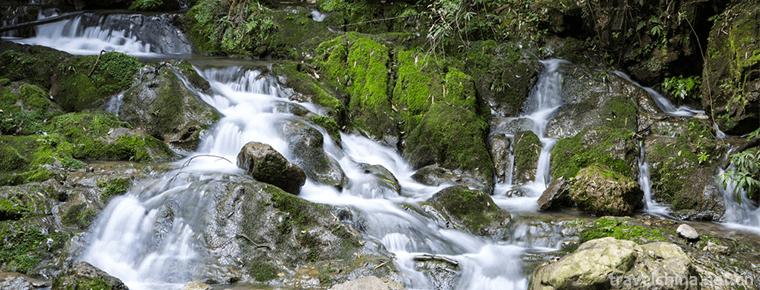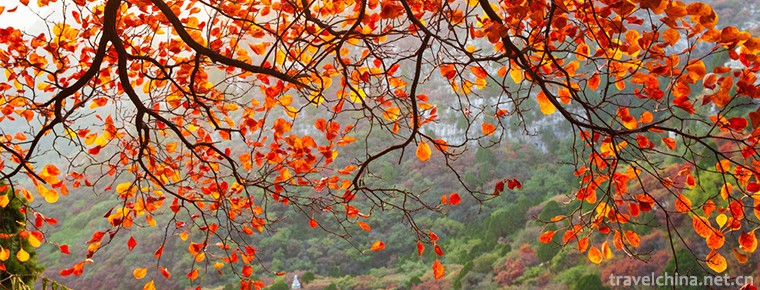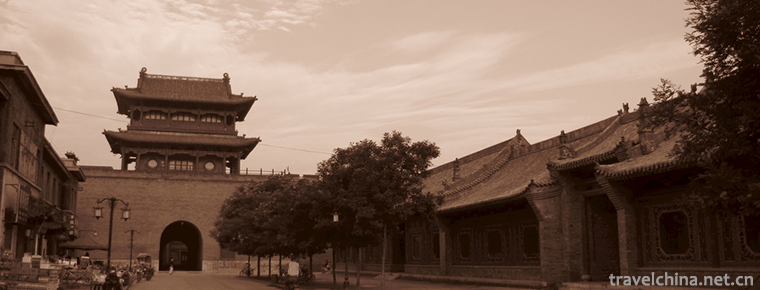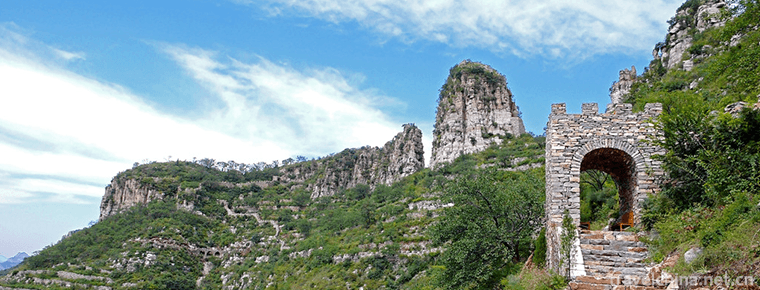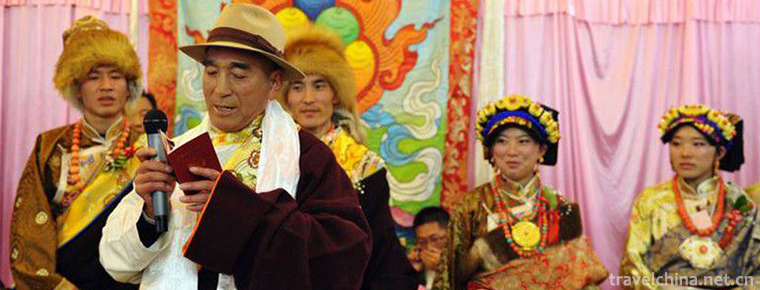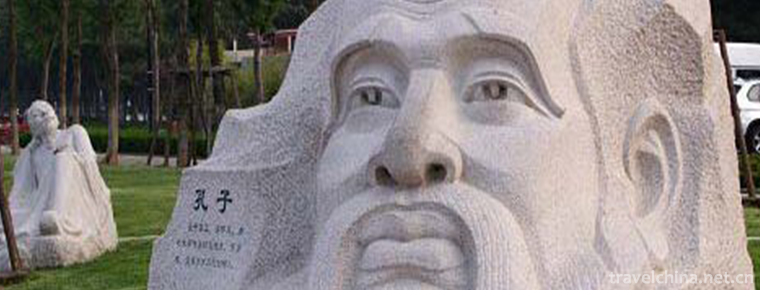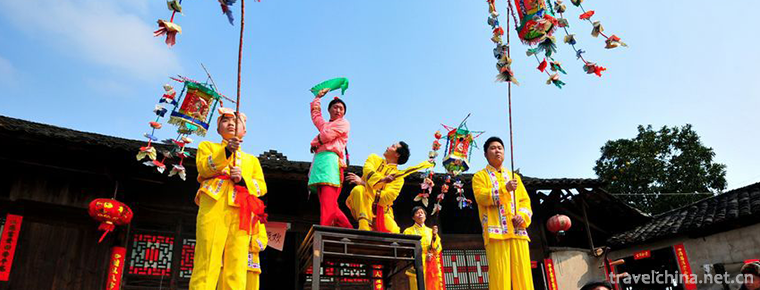Traditional Wooden Ship Manufacturing Techniques
Traditional Wooden Ship Manufacturing Techniques
brief introduction
Fuyang has a long history of shipbuilding. As early as the Tang Dynasty, water transportation was glorious. Fuyang Lingqiao wooden boats are mainly distributed in towns along the Fuyang River, especially in Lingqiao, Dongzhou, Yushan and Lishan. The craft of bridge wooden ship is strange, conservative craft has high technical content and technical basis, and modern shipbuilding technology is difficult to replace. Its wooden sailboats are built by wind and skidding. They have strong wind resistance. The level 7 and 8 of the sailboats are generally driven by light wind energy, and there is no pollution such as music and diesel oil in flight. The whole ship consists of more than 100 components such as cabin, stern and windward beam, all of which are manufactured by hand.
historical origin
Fuchun River has a long history of going up the ship (wood). The famous ship can be traced back to the Dongwu Water Division of the Eastern Wu Dynasty in the Three Kingdoms Period. The Fuchun River was also the manufacturing site and training ground of warships. The fleet and craftsmen led by Zheng He in the Ming Dynasty during his voyage to the West also had many Fuyang people, which could be said to have a long history of ships. Fuchun River also created a group of shipbuilders. Zhang Yousong, Shacun, Dongzhou School, has been famous since his grandfather and father. Because of his excellent skills and numerous apprentices, most of the boating in Fuchun River was created by Zhang Jia, and his reputation was impetuous for a time, which had great influence. They use exquisite shipbuilding skills to build different types of ships with different functions, such as official ships, cargo ships, passenger (ferry) ships and so on.
basic content
Before there was no bridge on the Fuchun River, water shipping was the main way to communicate the traffic between the north and the south, so there was a great demand for traditional wooden boats. The Fuchun River is dominated by wooden sailing boats. The sailing depends on wind power and skidding. It has strong wind resistance. Category VII and VII gales can run normally. There is no noise and diesel pollution during the sailing. Traditional wooden boats are mainly made of Chinese fir and other raw materials, supplemented by nails, hemp silk, lime and tung oil. The whole shipbuilding process is divided into nine parts: material selection, material preparation, material breakage, ingredients, broken board, partitioning board, assembly, flax beating and ash filling, oil tanker and launching water. The whole ship generally consists of more than 100 components such as cabin, stern and downwind girder, all of which are manually operated, and the process is complicated. There are no drawings in the process of production. It relies solely on the vision and experience of the shipbuilder. The traditional wooden boats on the Fuchun River are of various kinds, reflecting the exquisite handicraft of the residents along the Fuchun River.
basic feature
"A wooden ship depends on experience, no drawings, no information." Lv Xie said to the author, "Building wooden sailboats is a relatively difficult and long apprenticeship craft. It usually takes more than ten years of study to work alone. The timber, sails and masts used in shipbuilding are very particular, and they are totally calculated by heart. The error of load tonnage of the wooden sailboat can not exceed 10%. It takes more than 10 workers a month to build a ship.
Main value
Lingqiao wooden boat has a unique manufacturing technology. Traditional manufacturing technology has a high technical content and technical basis. Modern shipbuilding technology is difficult to replace. Wooden boat craftsmanship is a rare exquisite skill and a precious wealth accumulated by the working people for a long time. Wooden boat is the historical witness of Fuchunjiang culture. It is necessary to preserve and inherit the technology of making wooden boat to build a famous city of landscape culture. It is a potential tourism resource, adding the flavor of the Fuchun River for tourists to enjoy and take pictures, and adding weight for Fuyang to become a famous tourist hotspot.
Endangered situation
Nowadays, there are few people in Fuyang who can build wooden sailboats alone. Lu Jiehe, 62, is the youngest among them. Lv Jiehe's tone of voice reveals a trace of helplessness and sadness when he tells the author about these things.
Lu Jie and 12 years old learn shipbuilding skills with his father, 15 years old can build fishing boats, 20 years old began to build various wooden boats. In 1986, Lujia set up Wangjiami Shipyard. Fifteen workers learned the skills of making ancient ships. Since the 1990s, all-steel boats have replaced man-made wooden boats. The market of wooden boat production has been frozen, and the market of wooden boats has almost been cut off. It is difficult to carry on. In addition, the wooden boat production process is more complex, the technical difficulty is greater, the practice cycle is long, the physical consumption is large, young people are unwilling to learn, so the skills are difficult to continue. This whole set of craft, if not protected, is in danger of losing its heritage.
protective measures
In order to continue the craft of ancient ships, Lv Jiehe developed it into an industrial one. Besides exhibition, all models of ancient ships are also manufactured and retailed to promote people's understanding and understanding of ancient ships. Three years ago, because of his personal interest, Lv Jiehe also made models of Western ships to further promote the market.
In 2009, Lingqiao wooden boat production technology was awarded the third batch of provincial non-heritage projects, which received the attention of the Fuyang Municipal Government. According to Xu Shunfa, director of the Municipal Non-Heritage Center, city leaders made important instructions on the protection and utilization of wooden boat making techniques this year, and asked relevant departments to increase their support. At the same time, the local government is very supportive. Sun Yanqing, the mayor of Lingqiao Town, also said that he would provide all-round support for the construction of ancient ship exhibition halls and workshops.
The non-heritage center of Fuyang Wenguang New Bureau has put forward corresponding concrete measures for the protection of this non-heritage project, requiring that the inheritance, popularization and utilization of wooden boat skills be promoted; that the service work be done well for the inheritors; that the exhibition hall of wooden boat making skills be built; and that the industrial protection of non-heritage projects be carried out, which will be the best form of cultural heritage.
Manufacturing techniques, methods, or processes
Lushi's ancient ship is made of Chinese fir, camphor, pine, cotton cloth and tung oil. It is made into an ancient ship through five main processes. The technological process of shipbuilding is as follows:
1. Lofting (calculating material quantity and taking material);
2. Sawblade;
3. Shipbuilding hull;
4. Cut the seam, then mix it with tung oil, lime and hemp bars, and then plug it into the seam to prevent leakage.
5. Paint with tung oil 2-3 times.

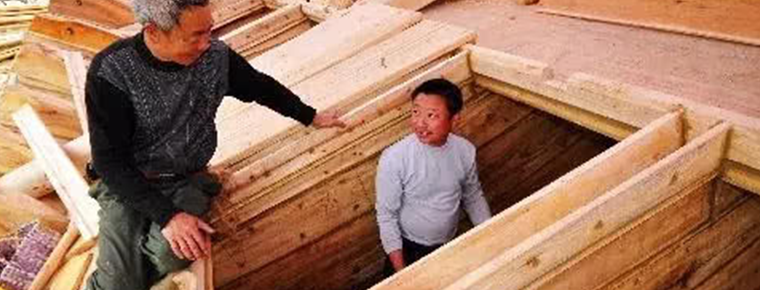
-
Taihang Grand Canyon
Linzhou Taihang Grand Canyon, located in the northwest of Henan Province and Linzhou City in the eastern foot of the southern Taihang Mountains.
Views: 255 Time 2018-12-09 -
Black Valley Scenic Area
Black Valley, National AAAAA Tourist Scenic Spot, National Forest Park, National Geopark, China's Best Leisure Mountain, China's Best Green Low Carbon Tourist Leisure Spot.
Views: 107 Time 2019-01-13 -
Red Leaf Valley Eco cultural Tourist Area
Red Leaf Valley Eco-cultural Tourist Area, National Key Scenic Spot, National AAAA Class Tourist Spot. Red Leaf Valley is located in the southern mountain area of Jinxiuchuan Township.
Views: 193 Time 2019-01-16 -
Suzhou suburb mudu town
Mudu Ancient Town, nicknamed Duchuan, Xujiang and Xiangxi, is located in the southeast of Jiangsu Province and the west of Suzhou Ancient City. Located in the Taihu Lake Basin.
Views: 136 Time 2019-02-07 -
Pingyao Ancient City Scenic Spot
Pingyao Ancient City is located in Pingyao County, central Shanxi Province. It was founded in Xuanwang Period of Western Zhou Dynasty (827-782 BC)..
Views: 144 Time 2019-02-07 -
Yongquan Qicheng Great Wall Ecological Scenic Area
The Great Wall of Yongquan Qi is a quiet tourist scenic spot, located in Yongquan Village, Zihe Town, Zibo City, where Pu Songling lived in the southeast mountain area. Here the mountains are connecte.
Views: 122 Time 2019-03-05 -
Eighteen Sayings on Tibetan Wedding Banquet
The Eighteenth Tibetan Wedding Banquet is a kind of folk oral literature spread in the Tibetan inhabited areas of the eastern agricultural region of Qinghai Province. Its manifestation is the eighteen.
Views: 108 Time 2019-04-07 -
Hui folk instrumental music
Hui folk instrumental music is a long-term life practice and cultural activities of the Hui people in Ningxia, inheriting ancient instruments of Ningxia and northwest frontier fortress instruments and.
Views: 169 Time 2019-05-04 -
Quyang stone carving
Quyang stone carving is an important part of folk art in Quyang County, Hebei Province. Since the Western Han Dynasty, Quyang stone workers have used marble to carve steles and other objects. Quyang s.
Views: 262 Time 2019-06-11 -
Xiushan Festive Lantern
Xiushan lantern is an important school of lantern art in southwest China. It is a folk cultural phenomenon and folk performing art that integrates religion, folk custom, singing and dancing, acrobatic.
Views: 80 Time 2019-07-08 -
Jihua Temple Music
The music of Zhihua Temple and Beijing originated from the music of court etiquette in Ming Dynasty. It is the only kind of music inherited from generation to generation in China's existing ancient mu.
Views: 177 Time 2019-08-03 -
Warm tips for Chengdu Giant Panda Base
Giant pandas live in dense bamboo forests at an altitude of 2600-3500 meters. The annual temperature is lower than 20 ℃ and likes cold and afraid of heat. When the weather is cool, the giant panda will carry out activities in the outdoor playground. When the outdoor.
Views: 173 Time 2020-12-13

